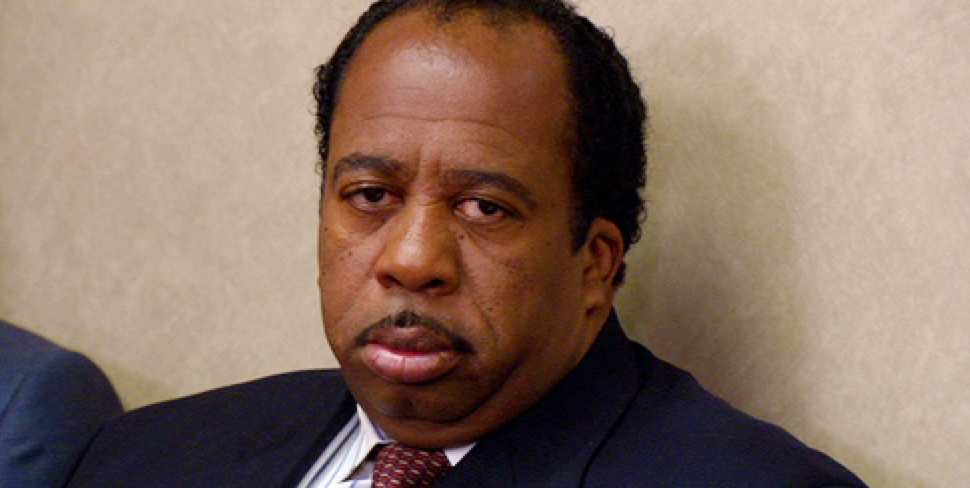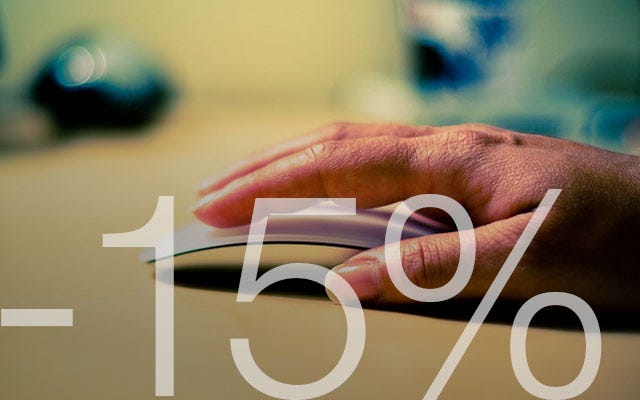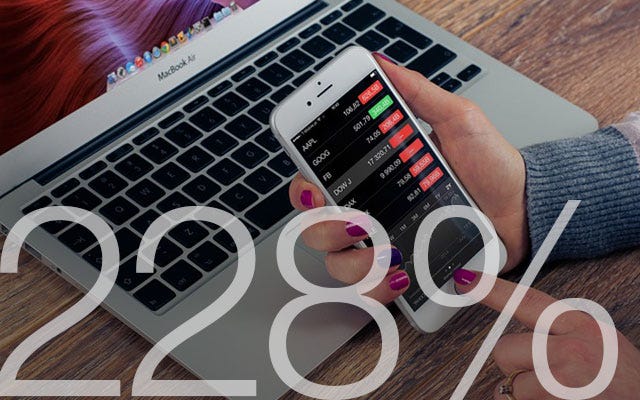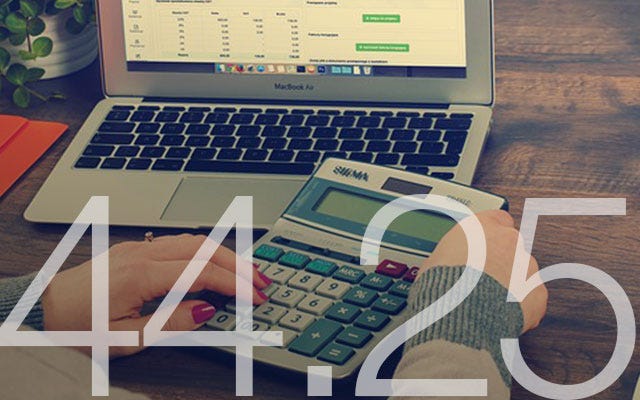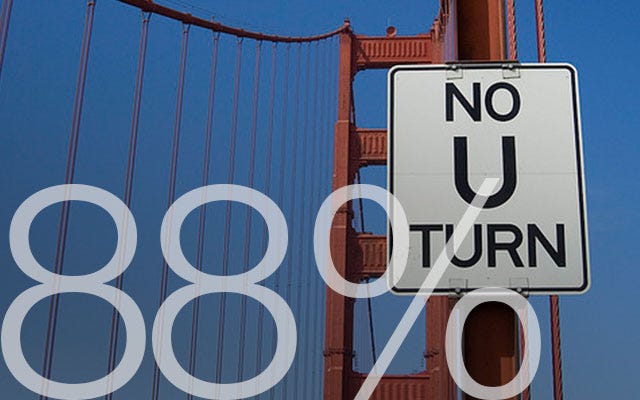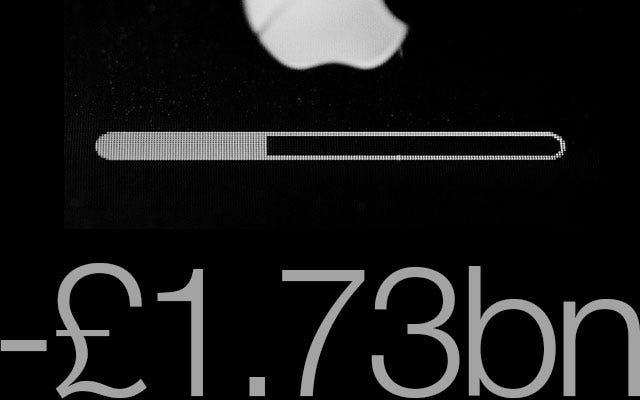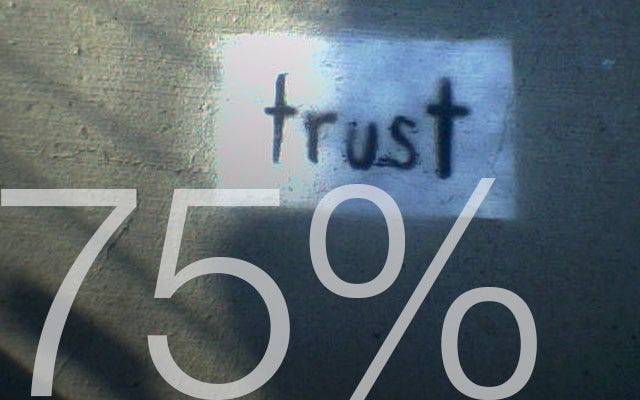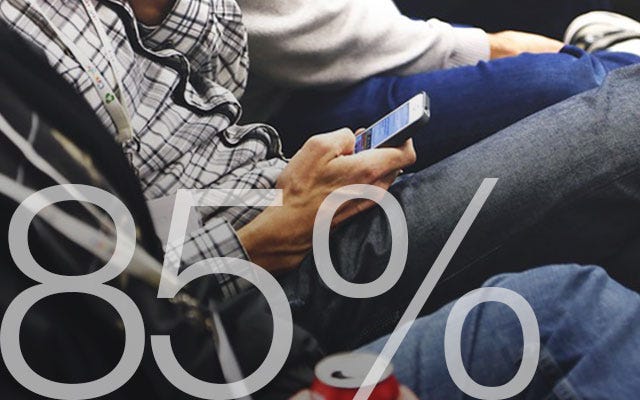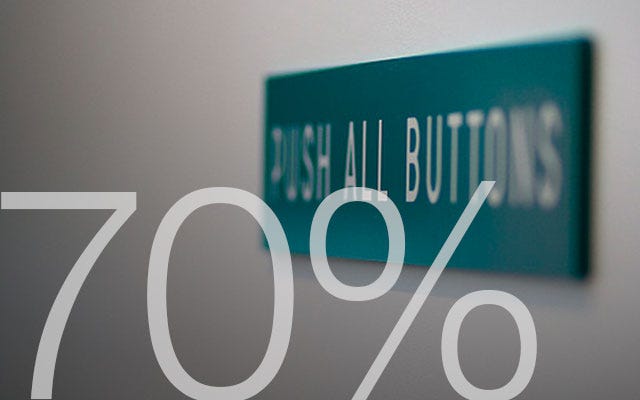Local SEO has seen the biggest shake-up since Google launched their first local algorithm, Pigeon, just over a year ago. On Thursday, August 6th, people began to notice that the usual 7-packs that frequently showed up in the search results for local businesses were suddenly replaced with 3-packs in the desktop search results. It initially wasn't too alarming, but as the hours passed it was obvious Google had changed the face of local search in their search results.
By the end of that day, 3-packs had completely replaced all the 7-packs across all verticals and across all countries. This was an unusual move for Google, since they commonly tested out local changes that only rolled out to specific countries. But this change was for everyone everywhere.
By the next morning, less than 24 hours after the first changes were noticed, Mozcast confirmed what everyone suspected: 7-packs were history and 3-packs were all the rage.
Mobile-centric
As mobile usage continues to grow higher and higher, Google has changed their desktop search results to appear more similar to the mobile-specific search results; the 3-packs fit perfectly on the screen for mobile users.
Regardless of what you search is for, it is those top three spaces that make up the screen real estate for a mobile user, along with the Google map that appears for some local queries. Google's removal of all 7-packs brings desktop the same user experience as mobile users have been getting for some time.
Here is how the local pack appears on mobile.
And the same search on desktop now.
The look and feel is pretty close now for both desktop and mobile searches.
Google has always been very focused on user experience regardless of the product or platform, so it isn't at all surprising to see local as yet another area where Google is changing desktop to match the mobile user experience.
How much traffic was in the bottom of the 7-Pack?
Google doesn't make changes to the way they present search results without a lot of testing—tests that are often noticed by SEOs. Ever since we first saw the 3-packs make their first appearance, many SEO experts were concerned that Google could make a change to show more 3-packs than 7-packs. This is now a reality, and it has huge implications for any local business with more than two other competitors.
Just how much traffic were those sites listed in positions 4-7 getting? For Google to make this change, it is very likely those results weren't clicked on nearly as much the top three. But again, this likely comes down to positioning and screen real estate. In mobile, even if they were showing 7-packs, it is the top three that fill the mobile screen, making those 4-7 spots invisible until someone scrolls down.
This is something that
Andrew Shotland from
Local SEO Guide agrees with. "I would imagine that Google was seeing far fewer clicks and calls from the listings after the first three," says Shotland. "So they probably figured , 'what's the point of presenting them?' "
But even if businesses weren't getting much traffic from the 4th to 7th spots, it was still a branding opportunity. These websites were getting exposure, particularly on desktop, and they are now missing out on that important branding.
Other changes
Along with the new 3-packs everywhere, Google also made some changes to the 3-packs, and not everyone is happy about these changes.
Addresses
Google removing specific addresses and only showing the street names in a 3-pack does promote people actually clicking through, which can be a good thing for those who aren't in the top three.
Here is how it appears in the pack for both desktop and mobile. Note the street address but no street number.
Even initially clicking through to the additional results or on a listing still shows no address on the left side. It is only once you bring up the panel result on the right that you finally see a full address.
However for those who are looking on mobile, even when they do click through to the "more" option, you still don't see full addresses, and it is still those top three results from the 3-pack that will be displayed at the top of the screen. If a mobile user clicks on an individual listing in a pack, they go to the store's card listing page which looks almost identical to the card on the right of the desktop search.
So yes, there's the potential to get traffic even if you aren't in the top three from those clicking through to get an address, but it will likely be more for desktop searches as opposed to mobile.
Ratings
If you are in a restaurant-related business, your ratings are going to become even more crucial. Google has added an option for searchers to select only businesses that are above a certain rating, currently choosing from two stars and higher, three stars and higher, or four stars and higher.
With searchers faced with the option, it doesn't take much to realize that of course users are going to be selecting the ones with four stars or higher. So while having good ratings has always played an important part in local SEO, for restaurants this should be at the top of the marketing priority list.
Some smaller towns may not see the ratings selector if there are not enough restaurants with ratings available. In an area with plenty of restaurants, though, the ratings drop down (and likely the additional drop downs for cuisine, price, hours and Zagat) will appear.
We also know that Google likes to test small before unleashing it everywhere. So businesses should anticipate that this star rating selection drop-down is going to appear for other local related searches in the 3-pack, even if just on a testing basis.
If your business is in a highly populated area or there are many competing businesses in the market, you should start thinking about those stars now so you're prepared if and when Google expands this rating selection. It would be very unlikely Google would give any advance warning about this kind of change, in order to prevent the possibility of businesses spamming reviews, so working on getting reviews will become a necessity unless you are already fortunate enough to have plenty of 4-star or higher reviews.
Diminishing role of Google+
For now, it will still be important for local businesses to claim their profile pages. We are still seeing links to the Google+ profile page when those businesses come up in the regular organic search results, even if they have been removed from the local 3-pack.
Even in the local 3-pack we are now seeing photos for local businesses shown through the Google Maps display, and not through Google+ as they were in the past. This is a very significant change for Google; while we knew they were moving the photos product from Google+, some thought business photos would migrate to the new Google Photos product rather than Maps.
Here is an example of a local business's photos on Google Maps:
Of course, we also know the Google is changing how baked-in Google+ is with the rest of their services. But for now, businesses should consider it business as usual in terms of claiming their Google+ page and directing reviews to it, as for now, this is where Google is still getting their reviews. "Continue focusing on Google+ reviews as well since those are the only reviews Google is showing in the Local Pack," says
Brian Barwig with
Integrated Digital Marketing.
New businesses & reviews
Unfortunately, with this new change it has become very difficult for someone to leave a review for a business that currently does not have any reviews listed. In fact, it is next to impossible.
Right now, if someone wants to leave a review, they can just find the local listing, click the reviews link and then choose to leave their own. But for a business that has no reviews, you can't actually get to the page that has the option to leave a review:
There is a workaround if you can manage to find the Google+ page for the business, but in a world where businesses need to make it as easy as possible to leave a review, many won't jump through the hoops required to leave a Google review and will head to leave one on Yelp instead, if they leave one at all.
In fact, for this location of the Walking Company, we couldn't find a Google+ page to leave a review but we did discover the Yelp page for this location on the first page of the search results.
With ratings and reviews playing a role in local SEO, Google's oversight in this area is surprising and it is hopefully being corrected. Any new businesses and those businesses who do not have any current Google reviews will be at a severe disadvantage if this isn't fixed in the very near future.
Coupled this with the fact we see ratings being given a greater emphasis in the local results with the ratings selector, it definitely puts new businesses or those without any reviews at a disadvantage.
New sponsored marketing model
Implications of home service ads
Google is testing the new home service ads, which look very similar to the local packs, but are sponsored results. It is currently testing only in San Francisco and only in two professions: for those looking for plumbers or locksmiths.
Here is the sponsored 3-pack as it appears in the search results:
And you click through to see this page:
However, many local SEOs are worried this program will expand to other cities and professions, making the local pack turn into a "pay for play" situation.
"This is my fear as well," says Barwig. "This new Local Pack looks similar to those ads and it could be Google's intention to simply replace the Local Pack with ads or integrate ads directly into the Pack."
It would be very easy change for Google to make, and for many searchers, a very seamless experience where they likely wouldn't even realize it was a sponsored result, since they do look so familiar to the 3-packs many expect to see for local searches.
"If there are only 3 precious spots," says Linda Buquet, from the
Local Search Forum. "It's easier to command a premium."
Google's lead generation
With these home service ads currently handled as per lead basis, it also opens up a new revenue model for Google. But on the opposite side of that, it is yet another way businesses would have to spend in order to get the traffic and business from Google.
I can see a scenario where these ads are the 3-pack," says Shotland. "If that's the case, then Google will have successfully transitioned to the old yellow pages pay-to-play business model, and we Local SEO types will need to spend a bit more time of lead optimization."
What about those penalized by Panda and Penguin?
The sites that will be hit particularly hard with this new change are those that were previously penalized by Google, either with Panda or Penguin. Right now, penalized local sites still show up in the local pack, even if they are impossible to find in the regular organic search. This is because Google will still show local listings for any website in the local pack, even those that are penalized with Panda or Penguin.
But now these sites are looking at a situation where only the top three sites are going to be on the first page of results. Sites that are looking to replace that pack listing with a regular organic listing will not be able to do so if they are penalized. Previously, even if they didn't make the top three, but were somewhere in that top seven, they were assured that their business was still visible on that all-important first page of Google search results. But this new 3-pack change can really hurt a penalized local business if they aren't appearing in that pack.
Google began a Panda refresh in July, and it is expected to last several months. This is good news for local businesses caught up in that filter, if they have made the changes necessary to be clear of Panda. If they start making changes now, they need to wait until the next Panda update to begin ranking again.
But for those who have been impacted by Penguin, it is been almost a year since we've seen the last update to that algorithm, and we still don't have timeline for when the next one will be. Penguin-impacted local sites should make it a priority to get those bad back links removed from their sites before we do see the next update or refresh to Penguin.
What about the new user experience?
Everyone has an opinion now that all the 7-packs have been removed. While some think it is great for user experience, many marketers have huge concerns about how users will interact with them, especially since most things would require a click through to the secondary listing page.
"It's possible users think this new design is such a poor user experience they click on the Map in order to get the full 20 Pack of listings," says Barwig. "Factors such as Click Through Rate, Bounce Rate, Time on Site and Content may be even more important now. If a website is poorly designed and doesn't have much information, a user has 19 other businesses they can compare against. Again, time and analysis will show if those 3 spots are as coveted as we think."
And since these 3-packs were driven by user experience, we will see if this change does indeed become permanent, although many agree it is here to stay unless Google changes up something dramatically for local on mobile first.
Top 3: When you're in & when you're not
Sitting pretty in the top 3?
There are those who have retained a spot in the new 3-pack. But even those who have a coveted spot in the 3-pack still have reason to be concerned. Local SEO is just to get more aggressive now that people are fighting for the top three links instead of just the top seven. Over half of those appearing in the 7-packs are suddenly gone, and everyone will want a shot in the new 3-pack.
There is real danger in being too complacent when it comes to rankings in Google. Just because you have a spot there now does not mean you can stop optimization efforts for local SEO, especially since your competitors will be ramping it up.
Many businesses that were previously happy just to appear somewhere in the top seven and have never done any local SEO up to this point will certainly begin marketing themselves better online. Sometimes those are the ones who suddenly sneak up out of nowhere, once they actually start their local SEO efforts, since they usually have nowhere to go but up.
Linda Buquet also made a great point for those local SEOs who are able to consistently get their clients into those top three spots: "If you are really good and usually get your clients in the top 3, then this update just knocked out 42% of your competition!"
Consolation for those outside the 3
Not all local SEOs are convinced that being outside of the top 3 is as bad as it initially sounds. First of all, we are still gauging the changes in traffic with the new 3-packs, especially for those who were accustomed used to seeing their businesses in the 7-packs.
"Google pushed out a major update and we are evaluating the new landscape to determine next steps," says Barwig. "It's too early to begin losing our minds. Analyze the pack, test ideas and track the results."
We have also seen Google roll back changes before, so while this change seems very permanent, it might not be. But SEOs have also learned never to underestimate how Google might change things suddenly – Google could decide next month that 2-packs or 4-packs are the new normal.
"Google has a history of pushing out updates and either slowly rolling them back or continuing to tweak the update until results finally settle," says Barwig. "There is a good possibility Google will make some additional changes/updates to this Stack Pack and things will shake out again."
Optimizing in a 3-Pack world
Getting into the top 3: Focus on organic
While local SEO has plenty of nuances that are very specific to local, there are also a lot of aspects of regular organic SEO that play a role in local rankings in Google. And it is going to be even more important for local businesses to work on regular SEO too.
With the old blended 7-pack algo, organic ranking pretty much controlled the ranking order," says Buquet. "But now using all the right ‘Local Hooks' is even more important than ever."
"Focus more on good solid organic SEO, both onsite and offsite. That will help boost your rank plus even if you can't make the top three, it will help your organic ranking. Many consultants I work with say top organic beats top local ranking anyway."
Of course, SEO should all be "white hat" Google-approved SEO techniques. While you may see some businesses dominating in your space using "black hat" or spam techniques, for the most part they tend to see short-lived success, and you can always file a spam report for websites spamming Google. But do make sure your own SEO is squeaky clean, since Google could take a look at other competitive sites in the same market or even specific keyword results.
Getting into the top 3: Focus on links
While links have been a significant part of local SEO, some businesses didn't even have to bother much with getting them, simply because their market wasn't competitive enough.But this is certainly changing.
"Good solid backlinks are probably more important as well," says Buquet. "In the past I didn't even need backlinks to rank clients and could do it just based on Places optimization and onsite. But now I'd say certainly in competitive markets backlinks are pretty key."
Don't forget that even nofollowed links serve a purpose, so don't automatically skip a link opportunity simply because it is a nofollow link.They can still send referral traffic, they can serve as a brand reminder and you never know if the linking site will decide to switch to dofollow links in the future.
Getting into the top 3: Focus on citations
Some market areas were just not competitive enough that citations and directories made a significant difference, while for others it was crucial. Be sure all your citations and directories are accurate and complete.
"My initial analysis started to paint a picture that citations were still important," says Barwig. "Make sure your clients are listed on the big directories, are feeding into the data aggregators and that the listings are 100% filled out and correct."
Buquet agrees. "I would also be sure citations are in order."
Citations are particularly important for those local businesses that do not have their own website.When Google can't pull data from an official site, they tend to pull information from other third party sources, which might not always be accurate.
Getting into the top 3: Marketing priorities
Local SEO is more than just link building, reviews, and directories. But many businesses were able to skate by with minimal SEO if they weren't in super-competitive local business areas such as law offices or restaurants. But with those 4-7 spots now gone in desktop, skating by isn't good enough anymore.
Shotland feels that marketing and PR will play a much bigger role for many businesses wanting to complete.
"One piece of advice: I just spoke to an attorney who is spending six figures on PR and they rank #1 in their market for some pretty high-value legal terms," says Shotland. "They have an SEO company to get the basic SEO pieces right and advise the PR program, but they are really invested in marketing. So my one piece of advice is get used to the idea of investing in marketing, not just hiring link builders."
We aren't just talking about the standard press releases, of course. Think beyond that, whether it is outreach to industry experts, local promotions or teaming up with complimentary – but not competitive – businesses in the same neighborhood as your local business. There are always great opportunities to get your name out there, and some will come with a bonus link.
Competitive analysis
For those who are currently residing in the top three positions for the new 3-packs, that doesn't mean it is time for you to sit back and reap the rewards. Those top three spots have become much more competitive than it ever was when there was a 7-pack.
If you are in the top three, you are going to want to be even more aware of every move your competitor makes, especially those you know will make a push for the top three. Monitoring back links will be crucial. Yes, even for those businesses you think are not doing any optimization at all, because sometimes their marketing and links are unsolicited. You can't foresee such things as a new link from the local Chamber of Commerce, a link because they sponsored a charity or even a popular blogger who does a review, complete with a nice juicy back link.
Set up alerts for each of your competitor's business names so that you get notification if they have a news story written up about them, you are aware of it. The same with any press releases, reviews, or anything specific to your particular industry that could be seen as a new promotion opportunity.
But rest assured, if you sit back and do nothing to improve your local SEO someone will be able to knock you out of that top three.
Local SEO in Google is an evolving process and we have seen two major shifts in how Google handles local searches over the past year.Local businesses have to learn how to adapt with the changing times or risk being left behind, and this means catering to local SEO in a 3-pack search result world.
Whether hoping for more Google+ reviews or deciding how to handle traffic when Google has brought their new lead ads to your vertical, local SEO has become much more complicated than it was just over a year ago. But it is those local businesses who are not only capable of evolving on the fly, but are also able to see the larger picture in the entire search results that will dominate the new SERPs. At least until Google decides to turn the industry upside down once again with brand new local SEO changes.




